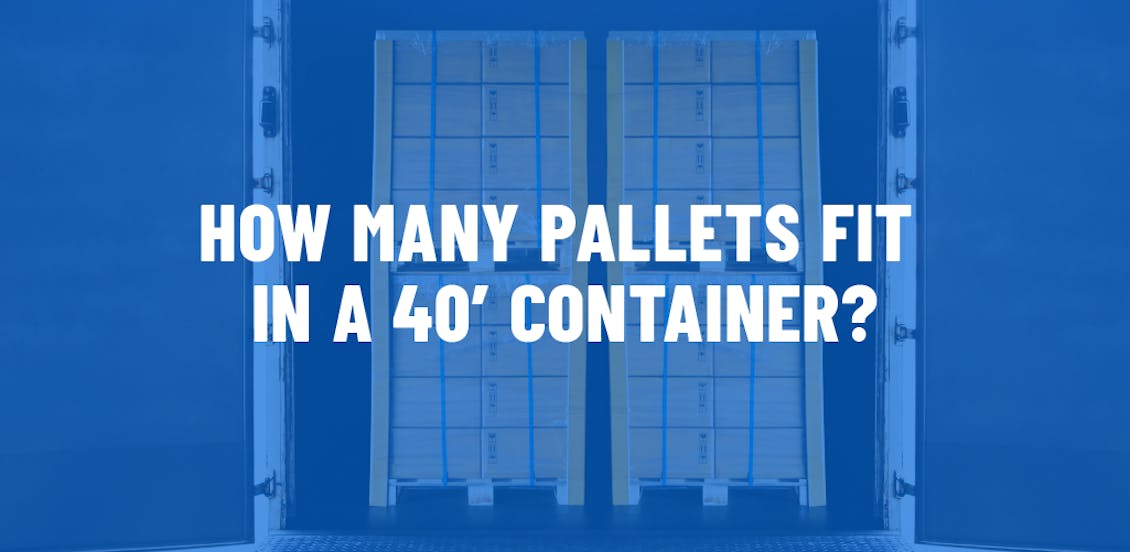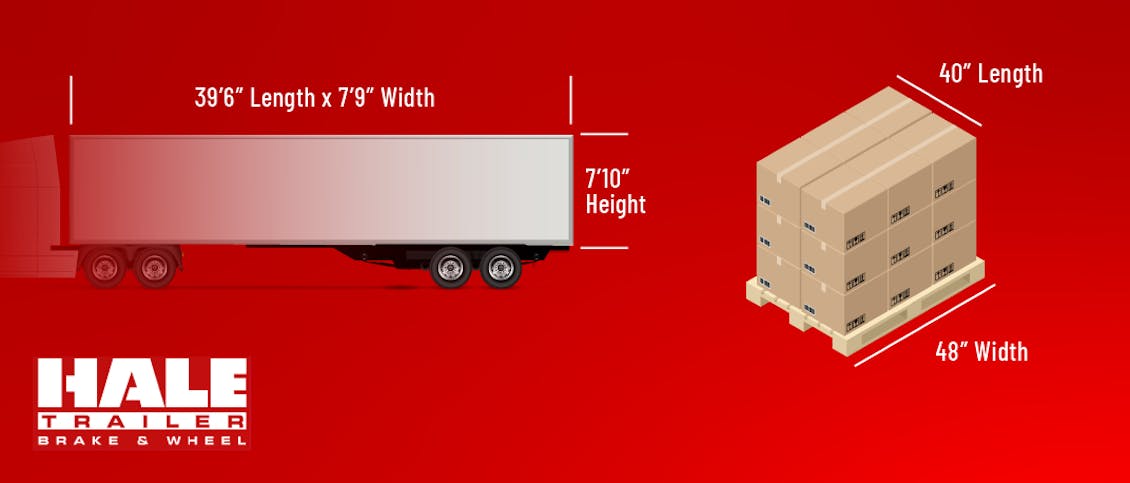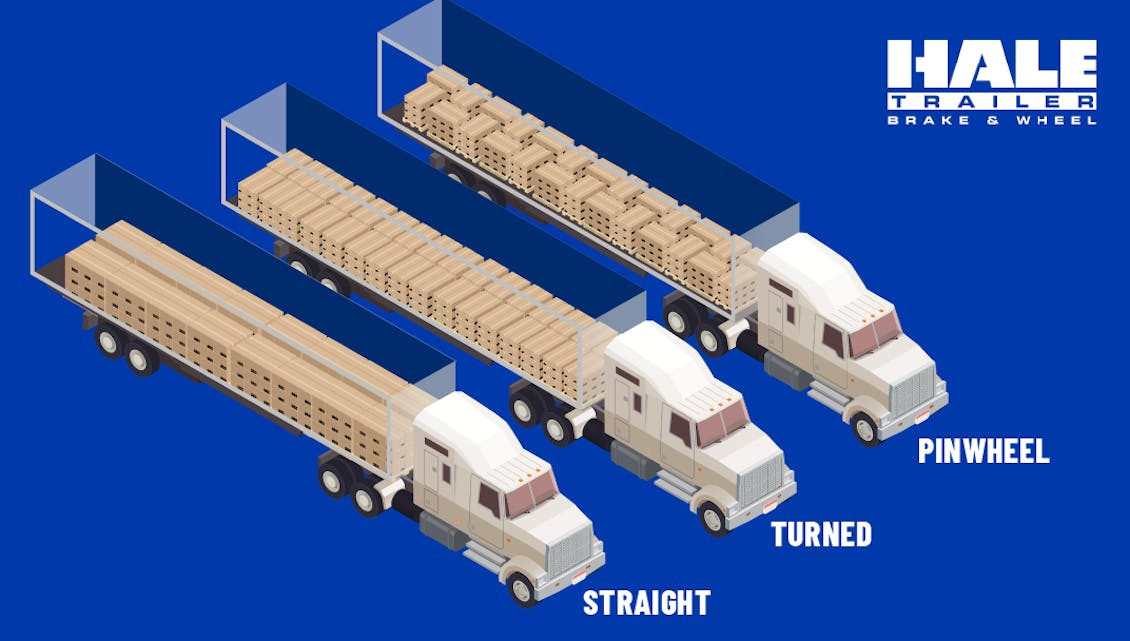How Many Pallets Fit in a 40′ Container
September 28th, 2023

When it comes to the logistics of shipping, understanding the capacity of your transport medium is crucial. In the case of a 40′ container, one of the most common questions is: how many pallets fit in a 40′ container?
The answer to this question can vary depending on the size and type of the pallets used. However, generally speaking, a 40′ container can accommodate between 20 and 24 pallets. This calculation is based on the standard pallet size used in the United States, which is 40″ x 48″. If you’re using Euro pallets, which are slightly smaller, you may be able to fit up to 24 pallets in a 40′ container.
Standard Dimensions of a 40’ Container

A standard 40′ container has an internal length of 39′ 6”, a width of 7′ 9”, and a height of 7′ 10”. This space is typically large enough to accommodate 20 to 24 standard pallets, depending on the loading pattern and the size of the goods being transported. It’s important to note that these dimensions can vary slightly depending on the specific model of the container.
The size of the pallets used can also affect the number of pallets that can fit in a 40′ container. Standard pallets, often used in the United States, measure 40″ x 48″. Euro pallets, which are commonly used in Europe, are slightly smaller, measuring 31.5″ x 47.24″. The smaller size of the Euro pallets allows for more pallets to be loaded into a 40′ container.
Factors Affecting Pallet Count
While the size of the container and the pallets are the primary factors determining how many pallets can fit in a 40′ container, there are other considerations to keep in mind. The type of goods being transported, for example, can affect the loading pattern and thus the number of pallets that can be accommodated.
The weight of the goods is another important factor. Even if the physical space allows for a certain number of pallets, the total weight of the goods must not exceed the container’s maximum payload. Overloading a container can lead to safety issues and potential damage to the goods.
The loading pattern used can also affect the number of pallets that can fit in a 40′ container. The most common loading patterns are straight, turned, and pinwheel. Each of these patterns has its advantages and disadvantages, and the choice of pattern will depend on the specific requirements of the shipment.
Types of Pallet Layouts
There are several different 40’ trailer pallet layouts you can use to maximize the efficiency of your load. The choice of layout will depend on the type and size of the goods being transported, as well as the specific requirements of the shipment. Here are the most common types of pallet layouts:

Straight
In a straight layout, shipping container pallets are loaded into the container in a straight line, with the long side of the pallet parallel to the long side of the container. This layout is simple and efficient, and it allows for easy access to the goods. However, it may not be the most space-efficient layout, especially if the goods being transported are irregularly shaped.
Turned
In a turned layout, the pallets are loaded into the container at a 90-degree angle, with the short side of the pallet parallel to the long side of the container. This layout can be more space-efficient than the straight layout, especially if the goods being transported are long and narrow. However, it can also make it more difficult to access the goods.
Pinwheel
The pinwheel layout involves alternating the orientation of the pallets, with some pallets loaded straight and others turned. This layout can be the most space-efficient of all, allowing for the maximum number of pallets to be loaded into the container. However, it can also be the most complex to execute, and it may not be suitable for all types of goods.
Optimal 40’ Container Pallet Layout
Determining the optimal loading pattern for a 40′ container depends on several factors, including the type and size of the goods being transported, the size and type of the pallets, and the specific requirements of the shipment. However, in many cases, the pinwheel layout is considered the most efficient. This layout allows for the maximum number of pallets to be loaded into the container, making the most of the available space. However, it’s important to note that the pinwheel layout can be complex to execute, and it may not be suitable for all types of goods.
Tips on Efficiently Loading a 40” Container
Loading a 40′ container efficiently requires careful planning and execution. Here are some tips to help you make the most of the available space:
- Plan your loading pattern in advance: Determine which layout will be the most space-efficient for the type and size of the goods you’re transporting.
- Use the right type of pallet: The size and type of the pallets can significantly affect the number of pallets that can fit in a 40′ container.
- Consider the weight of the goods: Even if the physical space allows for a certain number of pallets, the total weight of the goods must not exceed the container’s maximum payload.
- Use loading equipment: Using a forklift or other loading equipment can make the loading process faster and more efficient.
- Secure the goods properly: Once the pallets are loaded into the container, they should be secured properly to prevent movement during transport.
FAQ
Can you double stack pallets in a 40ft container?
Yes, you can double stack pallets in a 40ft container, provided that the height of the stacked pallets does not exceed the internal height of the container, and the total weight of the goods does not exceed the container’s maximum payload.
Can you stack 2 20ft containers on a 40ft?
Yes, it is possible to stack two 20ft containers on top of a 40ft container. However, this requires special equipment and should only be done by professionals to ensure safety.
How much weight can a 40 foot container hold on top of it?
A 40ft container can typically hold a maximum gross weight of 30,480 kg (67,200 lbs). This includes the weight of the container itself, as well as the weight of the goods inside.
Learn More with Hale Trailer
At Hale Trailer, we offer a wide range of trailers and related services to meet all your transportation needs. Whether you’re looking to buy, rent, or lease a trailer, we have the expertise and inventory to help you find the perfect solution. Visit our services page to learn more about what we offer, or check out our trailer inventory to see our current selection. For more tips and information on all things trailer-related, be sure to visit our blog.
All the information on this website – https://www.haletrailer.com – is published in good faith and for general information purposes only. Hale Trailer Brake and Wheel does not make any warranties about the completeness, reliability and accuracy of this information. Any action you take upon the information you find on this website, is strictly at your own risk. Hale Trailer Brake and Wheel will not be liable for any losses and/or damages in connection with the use of our website.
